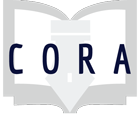This is a lateral reading 75 minute long lesson plan and worksheet assignment that introduces online source evaluation to undergraduate students, preferably first years. Lateral reading involves researching the content of a source as one reads it and this technique is popular with online fact checkers and journalists. The lesson plan calls for instructors to demonstrate lateral reading live (or via recording if asynchronous) using resources found on Google.
jmasunaga
Primary tabs
Assignments Contributed
This 30-minute activity demonstrates how to search in Google Scholar and explains how results are ranked. It requires students to explore Google Scholar and encourages students to reflect on potential biases this tool might have in regards to research. This lesson plan was Part 2 of an hour-long workshop that also included a 30 minute search engine algorithmic bias lesson.
This assignment is meant to illustrate the differences between scholarly and popular information sources by presenting students with information on the topic of "fracking" from four different resources: a scholarly article, a magazine, a newspaper and a website. It introduces the idea that information can be presented in different formats depending on the context and information need.
The following activity is meant to demonstrate the concepts of authorship and authority to your students. It introduces the idea that context can influence the tone and writing style of a faculty member or scholar and also introduces the concept of the scholarly conversation. It can be used for any discipline.
This assignment asks students to compare and contrast a Wikipedia article and an article from a subject specific Encyclopedia owned by the library. It asks the students to evaluate each resource by assessing its Relevance, Authority, Date, Accuracy and Rationale. Evaluation using these five criteria is known as the RADAR framework. Although the wikipedia article in this assignment is from biology, it can be switched out for any discipline.
Assignments Collaborated
This 30-minute activity was a quick introduction to algorithmic bias and the importance of critically evaluating search engine results. Algorithms increasingly shape modern life and can perpetuate bias and discrimination. In pairs, students analyzed the results from Google Image searches and Google Autocomplete suggestions. This activity was based on “Algorithms of Oppression: How Search Engines Reinforce Racism,” by Safiya Umoja Noble. This lesson plan was Part 1 of an hour-long workshop that also included a 30 minute Google Scholar activity.
In an effort to provide students with an open space to learn about and discuss recent national concerns over “fake news,” the library offered four sessions of the workshop “Keepin’ It Real: Tips & Strategies for Evaluating Fake News” during a campus-wide Inauguration Teach-In on Friday, January 20, 2017. During this session, students had the opportunity to talk about how misleading news sources (encompassing misinformation, disinformation, click-bait, propaganda, etc.) have affected their views on civil discourse, specifically relating to the recent U.S. presidential election.
This assignment is designed to help students develop a thoughtful research topic. Students go through a series of steps, questions, and background reading to help them better understand and refine a research topic.
Contributor Stats
| Total views | Adapters Count | Comment count | Document Downloads |
|---|---|---|---|
| 1,513 | 0 |
|
| Total views | Adapters Count | Comment count | Document Downloads |
|---|---|---|---|
| 723 | 0 |
|
| Total views | Adapters Count | Comment count | Document Downloads |
|---|---|---|---|
| 1,701 | 3 | 0 |
|
| Total views | Adapters Count | Comment count | Document Downloads |
|---|---|---|---|
| 562 | 0 |
|
| Total views | Adapters Count | Comment count | Document Downloads |
|---|---|---|---|
| 390 | 0 |
|

